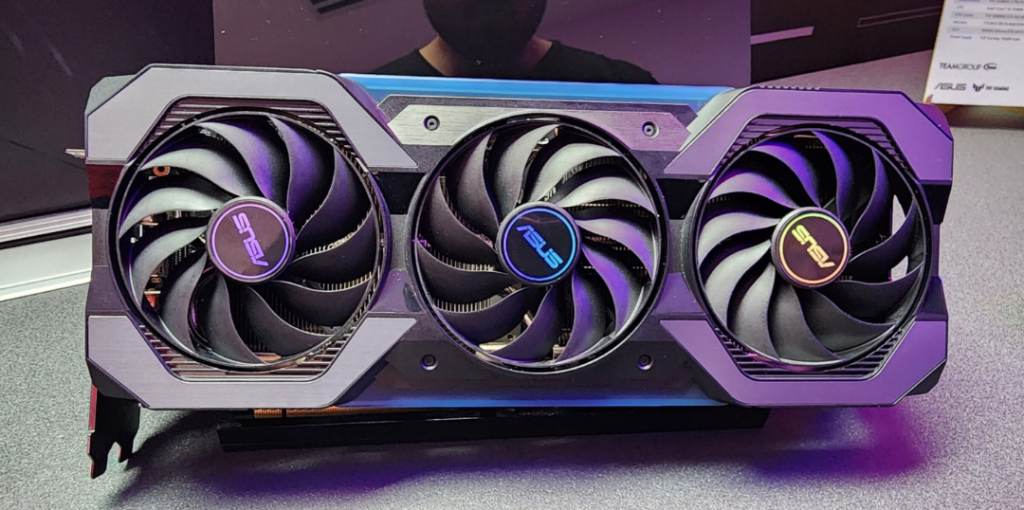The graphics card itself boasts a 2.3 slot design, incorporating a powerful triple axial-tech cooling fan system. Interestingly, it does not belong to any of ASUS’s well-known GPU lineups such as ROG STRIX, TUF Gaming, or Dual. The backside of the card features an extended backplate that extends beyond the PCB, providing a cut-out for improved airflow. Additionally, a convenient dual-BIOS switch is included, allowing users to toggle between “Performance” and “Quiet” modes. Although the backplate currently bears the name “Megalodon,” it has been clarified that this is not the final branding for the card.
One fascinating feature of this graphics card is its inclusion of a special slot on the PCB, in addition to the standard PCIe Gen 4.0 x 16 slot, through which power is supplied. Unlike traditional physical connectors, this card relies on a unique, proprietary slot for power delivery. It’s worth noting that a similar slot implementation has been observed on AMD’s Radeon Pro offerings for Apple Pro systems.
Continuing onward, the exclusive power delivery solution found on the Concept RTX 4070 is positioned adjacent to the PCIe Gen 4.0 x16 connections, boasting a remarkable power capacity of up to 600 W. This implies that the innovative connector is more than capable of adequately supporting even the most demanding graphics cards, such as the RTX 4090 with its 450 W TDP (Thermal Design Power).
Presently, there are no existing motherboards in the market that are compatible with ASUS’s novel power interface. However, during the demonstration, ASUS showcased an ASUS Z790 TUF gaming motherboard featuring a distinctive “GC_HPWR” slot designed for the proprietary GPU power connector. Notably, ASUS clarified that the “GC_HPWR” naming is temporary and that an official name will be assigned upon release. Interestingly, the motherboard featured all power-related components, including three 8-pin connectors and a single 12VHPWR connector, positioned on the rear side. Consequently, cables from the power supply unit connect to these connectors at the rear, while the graphics card draws power from the “GC_HPWR” port located at the front.

